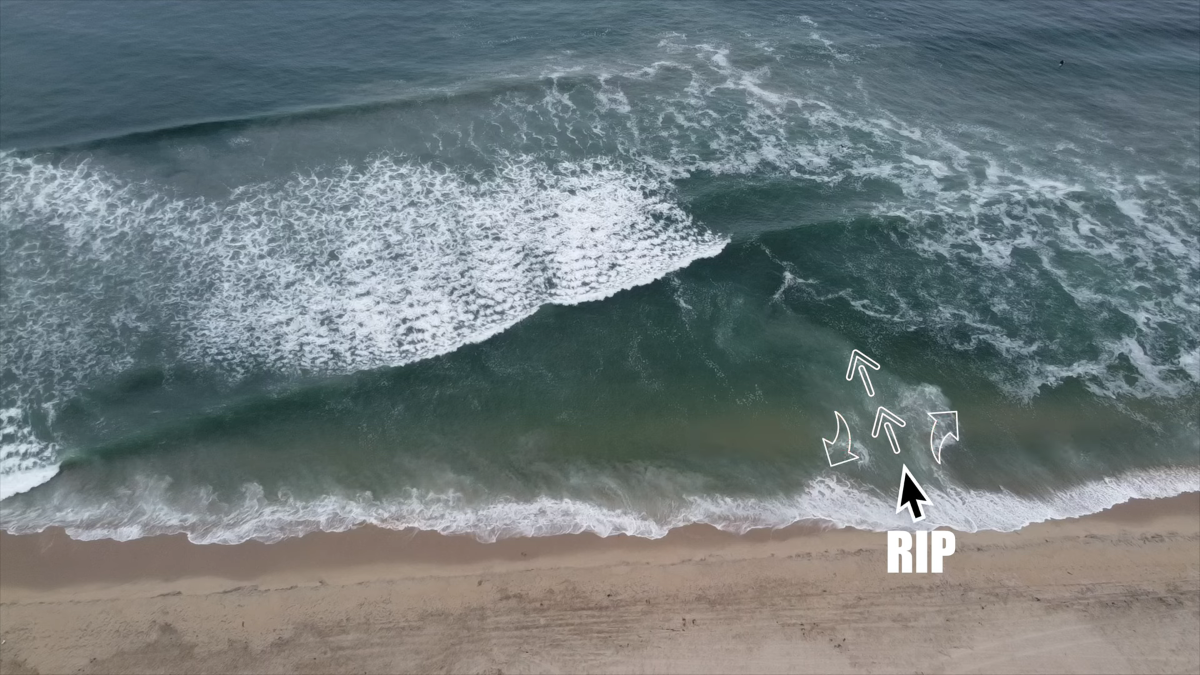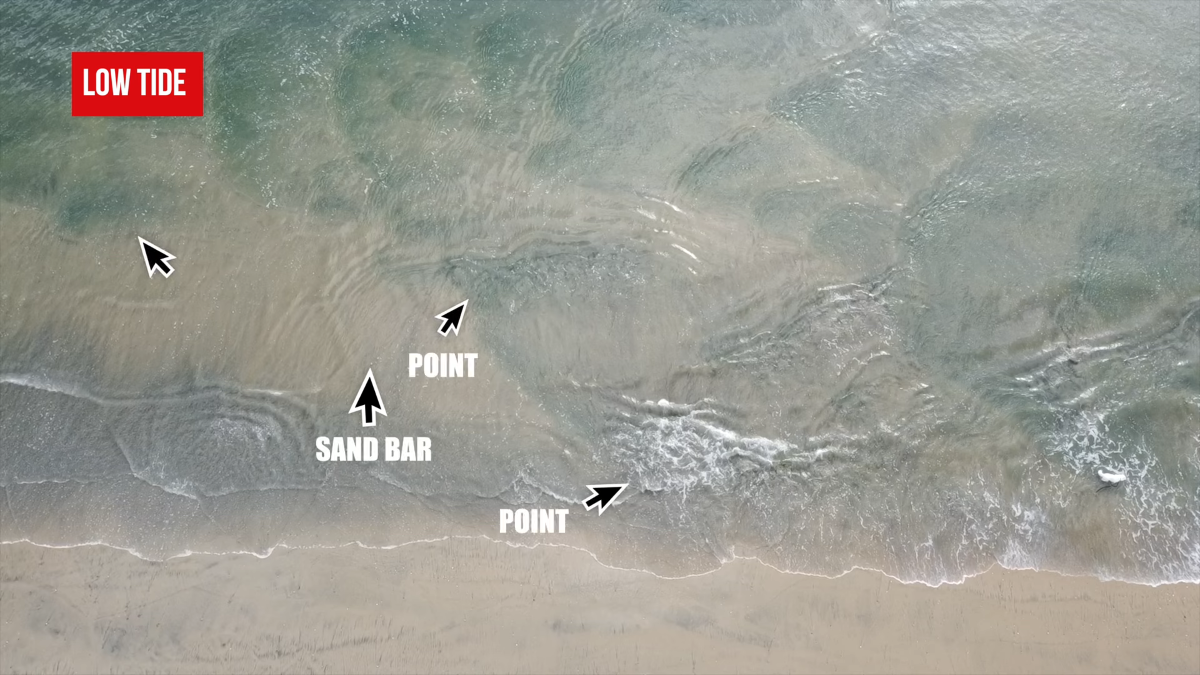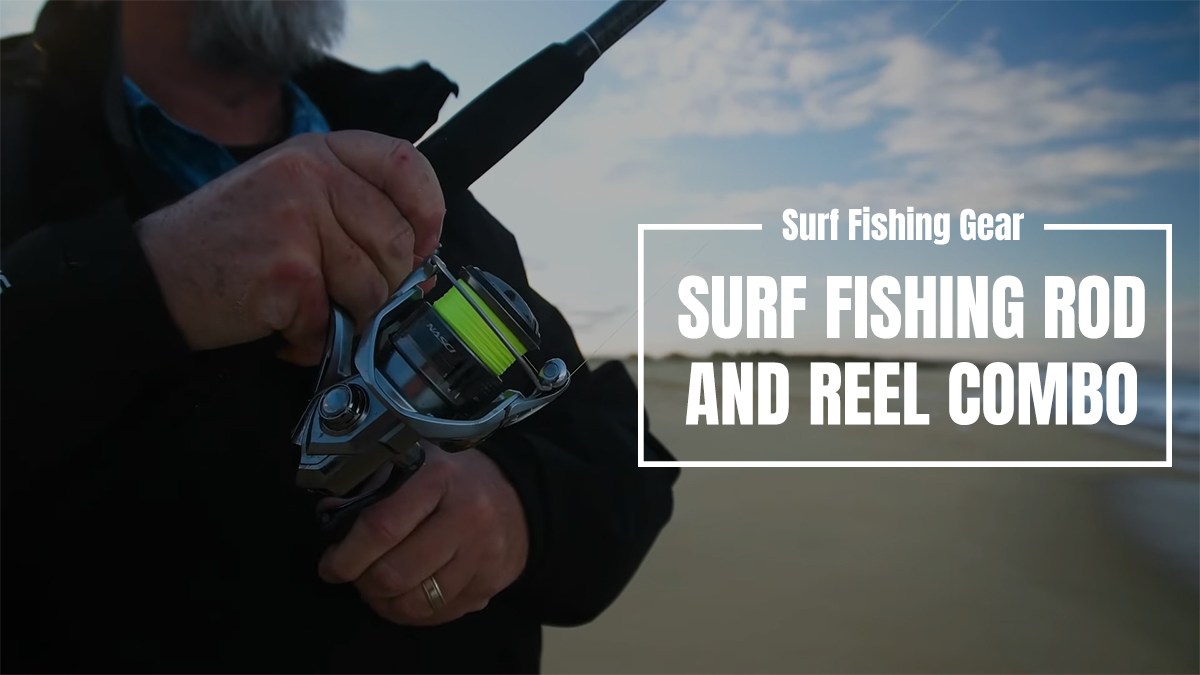Being out in the surf and ocean is an experience like no other; there’s nothing like seeing the gentle waves lapping against the shore and feeling the salt spray on your face as you walk along. But what if you’re looking to do a little bit more than just take in the sights?

Knowing how to read the surf can be immensely useful, especially when it comes to fishing! By taking a look at some important factors such as current, wave size, water temperature, and depth of tide changes, we can begin to decipher what type of sea life will most likely settle into these environments.
In this blog post, we’ll take an in-depth look at all this information (and more) so that even novice fishermen or beachgoers can maximize their chance of success when venturing into turbulent seas. So grab your tackle box and come join us as we go over everything you need to know about understanding how to read the surf for fishing!
What Does Reading The Surf For Fishing Mean?

Reading the surf for fishing is a skill that requires patience and knowledge. It involves studying the waves, tides, and other environmental factors of an area to better understand how fish may be migrating and feeding in those waters.
While mastering this skill may necessitate time and effort, it can greatly augment your proficiency in successful fish-catching endeavors during your time spent on the water.
Considering the specific characteristics of waves in a given area is highly important in order to obtain accurate results.. Pay close attention to how they break, swell, and disperse along the shoreline. These can indicate where a school of fish may be moving in or out of an area. Additionally, winds and tide levels can also have an effect on migration patterns as well as bait concentration.
By reading the surf and understanding these patterns, you can better anticipate where fish may be located or heading in an area. This will enable you to adapt your position effectively and enhance your likelihood of successfully capturing a substantial catch. Moreover, the ability to interpret surf conditions can assist in identifying the most suitable bait or lures for a specific area or scenario. By recognizing the presence of different baitfish, you can make more informed choices when selecting the appropriate type of lure for your fishing line.
How To Read The Surf For Fishing

We’ve just understood the definition of “Reading The Surf For Fishing”, Now, let’s discover “How to read the surf for fishing.”
If you want to get good at reading the surf for fishing, it helps to understand the basic elements of environmental conditions and wave movement. Pay close attention to how waves break, swell, and disperse along shorelines.
Waves Form patterns
When it comes to reading the surf for fishing, look for patterns in how waves are behaving. Pay attention to their peak heights, the frequency of wave breaks, and the direction they’re traveling. You can also look for any signs of baitfish or other wildlife that may be present near shorelines. All these pieces of information can help you better understand where schools of fish may be located.
Waves Action
The action of waves can also provide clues about fish migration patterns and bait concentration. Pay attention to how the waves break, swell, and disperse along shorelines. These can indicate where a school of fish may be moving in or out of an area. Additionally, pay attention to wind and tide levels, as they can also have an effect on migration patterns as well as bait concentration.
Spilling Breakers
Spilling breakers are waves that are breaking in shallow water and have low energy. They typically move slowly along the shoreline, which makes them ideal for targeting fish near shore. Pay close attention to how they break, swell, and disperse along shorelines, as these can be indicators of where schools of fish may be located.
Plunging Breakers
Plunging breakers are waves that are breaking in deeper water and have high energy. They typically move quickly along the shoreline, which makes them ideal for targeting fish further out in open water. Again, pay close attention to how they break, swell, and disperse along shorelines, as these can be indicators of where schools of fish may be located.
Wave Breaks
Finally, it’s important to pay attention to the frequency of wave breaks. If you observe multiple waves breaking in quick succession, it may suggest the presence of a nearby school of fish. Additionally, if multiple waves are breaking at the same time and they are all moving in similar directions, this can indicate bait concentration, which can be an indicator of fish migration patterns.
By understanding these basic elements and reading the surf for fishing, you can better anticipate where fish may be located or heading in an area. This will enable you to align your position accordingly and enhance your likelihood of successfully capturing a substantial catch. With patience and practice, anyone can learn how to read the surf for fishing!
Overall, reading the surf is a great way to become successful at fishing. It requires considerable time and patience, but once you have acquired mastery, the rewards will prove to be highly worthwhile.
How To Read The Beach For Surf Fishing: Identify Different Water Structures

When it comes to reading the beach for surf fishing, one of the most important elements is understanding water structures. Pay attention to how waves break, swell, and disperse along shorelines, as they can indicate where a school of fish may be located or heading in an area. Additionally, look for any signs of baitfish or other wildlife that may be present near shorelines. Fishing at the beach is an exciting and rewarding experience, and knowing the different water structures can certainly help you maximize your success.
Having the latest and finest surf fishing rod, top-tier tackle and bait, and unbreakable determination are all essential elements. However, without a profound understanding of the art of reading the beach, success may prove elusive.
- Rips’s Eddies
Rips and eddies occur when water is pushed outward from the shore by waves, resulting in currents that can draw baitfish away from the beach. Rips often produce a V-shaped pattern, while eddies may form swirls along the shoreline. Both of these are great indicators for surf fishing since they can provide clues about the direction of fish movement. - Sandbars and Channels
Sandbars are shallow areas that form near shorelines and can create breaks in wave action. These breaks allow baitfish to move into shallow water, which often attracts large game fish like red drum, flounder, and trout.
In addition, channels can also form between sandbars, creating pathways for baitfish and gamefish to move in and out of an area. - Troughs and Bays
Troughs are deeper areas that form near shorelines and can provide excellent habitat for baitfish, which in turn attracts larger game fish like snook, tarpon, sea trout, and even cobia. Bays are sheltered areas of the ocean where baitfish can be found in abundance. They often contain a variety of species, making them prime spots for surf fishing.
How To Read The Surf For Fishing: Identify Troughs

We’ll continue finding out the best way to clarify troughs. There are three key features that warrant our attention and focus.
Somewhat Shallow Troughs
Somewhat shallow troughs are a great indicator of where fish might be located. These troughs are usually found in the waves that break closer to shore. Typically, these troughs contain baitfish and other types of wildlife, which can attract larger game fish.
Deep Troughs
Deep troughs may indicate a larger presence of game fish in the area. These troughs usually form further out from the beach, making them ideal locations to target larger game fish such as snook, tarpon, and even cobia.
Currents and Eddies
Finally, keep an eye out for any currents or eddies that may be present near shorelines. Currents can push baitfish away from the beach, while eddies can bring baitfish into shallow water. These are great indicators for surf fishing since they can provide clues about the direction of fish movement and where a school of fish may be headed in an area.
By understanding these basic elements and reading the surf for fishing, you can better anticipate where fish may be located or heading in an area. This will enable you to make appropriate adjustments to your position and enhance your chances of successfully capturing a significant catch. With patience and practice, anyone can learn how to read the surf for fishing!
How To Read The Surf For Fishing: Identify Rips, Holes, Cuts, And Points
To locate the fish accurately, we need to pay attention to the characteristics of the water including:
| Feature | Description |
|---|---|
| Rips | Rips form when waves break against the shoreline and create an outward flow of water. |
| Holes | Holes are depressions in the sand created by currents that can hold baitfish and attract larger game fish. |
| Cuts | Cuts form when sandbars divide a beach into two sections, creating a pathway for fish to move into and out of an area. |
| Points | Points are when a beach juts out into the ocean, creating a natural wall where baitfish and game fish gather. |
These features can be used as indicators for surf fishing since they often provide clues about the direction of fish movement. For instance, if you notice a rip that is flowing away from the shore, it may indicate that there is a school of game fish traveling in that direction.
On the other hand, if you spot a hole, cut, or point on the beach, this could be an indication of baitfish and other species gathering in an area that can attract larger game fish. By understanding how to read these features of the water, you can better anticipate where fish may be located or heading in an area.
In addition, pay attention to how waves and wind interact with these features. When the wave height is low and the ocean is relatively calm, you can look for small rips that form near shorelines.
These are ideal spots for surf fishing since baitfish tend to gather in these areas. When wind and wave height increase, larger rips, holes, cuts, and points become more evident. These are great places to target larger game fish since they often hold baitfish in their wake.
Having the skill to read the surf for fishing is crucial for a successful fishing expedition. By gaining an understanding of and being able to identify rips, holes, cuts, and points, as well as observing signs of baitfish, you can enhance your chances of landing a substantial catch.
Tips For Successfully Reading The Surf For Fishing
Keep in mind that every beach is unique and the conditions can change quickly. Pay attention to wind direction, wave height, tide levels, sun exposure, temperature fluctuations, and other environmental factors that can affect fish activity.
Additionally, practice regularly so you can become more familiar with the beach conditions and learn how to identify different water structures. Finally, take notes of any patterns or behaviors you observe while fishing; this will help you understand how to read the surf for fishing and increase your chances of success!
Given the changing nature of beach contours, it is crucial to remain vigilant of any topographic modifications and adapt one’s fishing approach accordingly. Also, don’t forget to bring along a variety of lures or baits, depending on the type of fish you are targeting. Finally, be mindful of local regulations regarding surf fishing and always practice responsible angling techniques when out on the beach.
Examine the characteristics of the sand itself.. Sand structure and composition can also offer clues about where to look for fish. Soft sand tends to be more fertile than hard-packed sand when it comes to attracting baitfish, while rocky bottoms or coral reefs can provide habitat for all sorts of species. Pay attention to the types of organisms living in the sand, as this may indicate what type of game fish are present in the area.
FAQs
What Are Some Benefits Of Knowing How To Read The Surf For Fishing?
You what’s a great way to find fish and up your chances of a successful fishing trip? Yep, reading the surf! It’s an awesome technique to locate those sneaky swimmers. By understanding how to read rips, holes, cuts, and points, as well as signs of baitfish in an area, you can better anticipate where fish may be located or heading in that area. Additionally, knowledge about local environmental conditions can also help you be more prepared and successful when fishing.
On The Waves, How Do You Discover Fish?
Ready to level up your fishing game? Keep a sharp eye on the waves and the direction of the wind. Exciting catches await! It’s crucial for a great fishing experience! Waves can often reveal clues about where baitfish are present or where game fish may be headed.
Moreover, it is recommended to conduct a comprehensive assessment of the shoreline for indicators of rips, holes, lacerations, and notable areas.. These indicators can signify regions with heightened activity, attracting both baitfish and game fish. Finally, it is imperative to maintain awareness of the presence of baitfish in the vicinity, including seagulls, pelicans, and other avian species.. That could mean game fish might be hanging around nearby! By being aware of these cues, you can better locate fish when out on the waves!
Which Tide Is Preferable For Surf Fishing—High Or Low?
Several factors, such as the size and species of the fish you intend to catch, come into play when determining the answer.. Generally, high tide is preferable for surf fishing since it brings baitfish closer to shore, which can attract larger game fish.
Low tide can also be a good time to start fishing since baitfish may gather in shallow waters near shore. Ultimately, it is best to consider the water conditions and type of fish you are targeting when deciding which tide to go fishing.
In High Surf, Do Fish Bite?
Yes, fish can still bite in high surf conditions. During these times, it is important to be aware of the current and wave direction since this can indicate where baitfish are present or which direction the game fish may be headed.
In addition, larger rips, holes, and points become more evident during high surf, so these areas should be targeted when fishing. By understanding how to read the surf for fishing in high and low conditions, you can increase your chances of catching a big one.
What Are Some Tips For Fishing On Windy Days?
When go fishing on a windy day, it’s essential to carefully monitor the influence of wind on the waves and water structure to ensure the best possible fishing conditions.. Can make a big difference in your fishing game!The wind direction can indicate which way fish may be headed and point to areas of high activity.
Besides, look out for larger rips, holes, cuts, and points that form due to the wind, which can be great spots for fishing. Furthermore, it is recommended to stay observant for signs of baitfish nearby, such as seagulls or other avian species. This useful tip can assist you in your endeavors. That’s usually a good sign that game fish might be hanging around too, you know?
When Is The Ideal Time To Fish?
The optimal time for fishing may vary based on the season, water conditions, and target species. Generally, early morning or late evening can be great times to start fishing since baitfish tend to feed during these hours, which also attracts large game fish.
Additionally, pay attention to the tide because high tides bring baitfish closer to shore, which can make it easier to locate fish. With patience and practice, you can learn when the ideal times are for fishing in your area!
Conclusion
All in all, learning how to read the surf for fishing can be a fun experience that opens up many more fishing opportunities. It is crucial to diligently observe the waves in your fishing vicinity and maintain constant awareness of your surroundings while casting into the surf.
By observing wave patterns, fish behavior, sand movement, wind direction, and a few other key elements, you can give yourself an edge on being successful out on the waves and have more success catching some delicious fish along the way.
Whether you enjoy fishing from shore or aboard a boat, this knowledge will serve you well! So get out there and let your curiosity lead you to become a successful angler!
source https://bassfishingarchives.com/how-to-read-the-surf-for-fishing/ by Clay Dyer

No comments:
Post a Comment